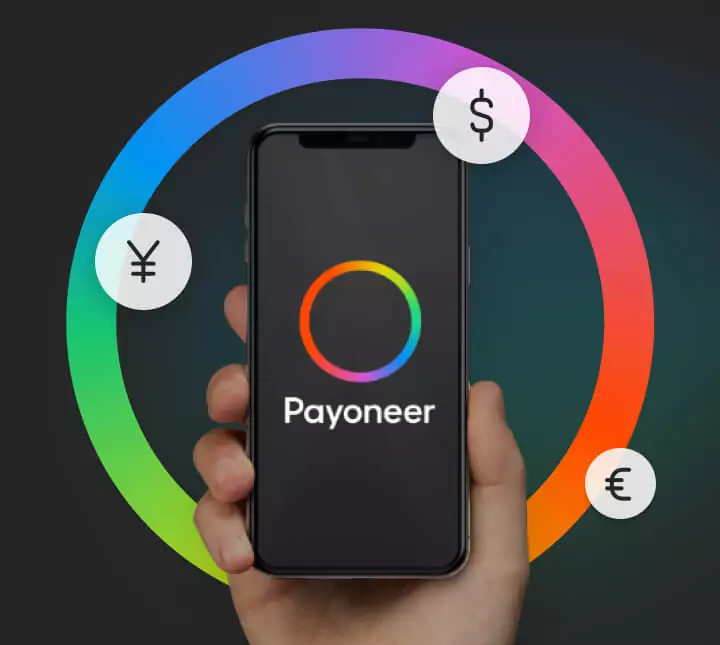How to sell online: A guide with resources to start
Online selling can be highly profitable if you use the right tools and reach the right audience with the right product. This article delves into the details of online selling, providing tips and resources for starting your own venture. Keep reading to learn how to get started, what types of products to sell, and where…

What is online selling?

Selling online is the process of offering products or services for purchase over the internet.
Picture this. There are millions of potential customers for your business across the world. And you can reach them electronically from the comfort of your home.
What would that mean for you and your business? A limitless opportunity for growth and increased profits, right? This is precisely what online selling is: A form of electronic commerce that allows you to offer goods and services to millions of digital consumers worldwide.
In numbers, you can access about 268 million digital buyers if your business targets the U.S. market only. Or over 2 billion people if you aim to sell to online buyers globally.
For an example of what online selling is and what it can do for your business, let’s look at Amazon:
The founder, Jeff Bezos, began Amazon as an online books marketplace in 1995 and has grown the company into an online retail giant. It now has over 300 million active customer accounts in over 180 countries.
Amazon’s online selling model is only one type of online selling. You can follow suit or choose a different model from the options below.
- Hong Kong is one of the most services-oriented economy in the world, with services sectors accounting for 93.4% of GDP in 2019.
- It’s the 6th largest exporter of merchandise in the world.
- It’s the 4th largest global financial center in the world.
- An incorporated company in Hong Kong must have a registered office in the jurisdiction.
Note that a P.O. Box is not accepted as a registered office address.
Types of online selling

There are several types of online selling, each with its advantages and disadvantages. A few examples include:
Ecommerce websites
This is the most common type of online selling, where a business creates an online store to sell products or services.
It allows the business to reach a global audience to sell their products 24/7.
Online marketplaces
Online marketplaces dominate the ecommerce industry. These marketplaces, such as Amazon, Etsy, and eBay, promote online shopping by:
Allowing customers to browse through a range of items, select their preferred product, and purchase within minutes
Facilitating companies to showcase and sell their products on the platform. As a result, companies interact with a broad base of consumers and serve a larger audience.
Social media selling
Social media selling involves using social media platforms like Facebook, Instagram, or Pinterest to sell products and services. It is a surefire way for businesses to reach customers in places where they already spend a lot of time.
With social media selling, you can build a loyal following around your products and create a long-lasting brand.
Dropshipping
Dropshipping is an ecommerce model where a business doesn’t keep any physical inventory of the products it offers.
Instead, the business takes customers’ orders, purchases the requested product from a third-party seller, and gets it shipped directly to the customer.
This way, you own an online store that sells products to customers. But, there is no need to deal with the logistics of stocking the products you sell or to handle the shipping. If you plan on selling on Amazon, dropshipping is one of the popular sales models you might consider.
Generally, dropshipping is a low-cost way to get started with ecommerce, although it can be more complicated to manage.
Check out this article to learn more about dropshipping and how it works.
Subscription-based selling
In subscription-based selling, businesses offer recurring services, products, or access to content.
Customers then subscribe to get the products and pay from time to time to continue using them.
Many business owners prefer this model of selling online because it provides a steady revenue.
Multi-channel selling
Multi-channel selling occurs when a business sells its products through multiple channels, online and offline. It could be through physical brick-and-mortar stores, marketplaces online (such as Amazon or Etsy), or various companies’ online stores.
Important elements of online stores

Every successful online shop has several key elements, including:
User-friendly design and navigation
A well-designed and easy-to-use website increases conversions. Visitors readily become customers, as the site helps them find the products they need and complete transactions quickly.
Product catalog
Your product catalog should be comprehensive, up-to-date, and easy to search, filter, and sort.
It should also include detailed product information, such as images, descriptions, and pricing. Use catchy, descriptive language to make your product descriptions engaging.
Also, ensure all images are high-quality. Go for professional product photos whenever you can.
Shopping cart and checkout process
Latest research shows over 80% of online shoppers abandoned their purchases after adding products to their cart in 2022. This is due to several reasons, including security concerns, being forced to create an account, complex checkout processes, and unexpected delivery costs.
Avoid this with a straightforward and secure checkout process that instills trust. The shopping cart should be visible on all product pages on your website and easy to use.
Choice of payment options
Having several payment options available is crucial for selling online. With various methods available, you can enhance the customer experience and drive sales.
Offering a range of payment methods, such as debit and credit cards, eWallets, and other payment methods like Payoneer payment requests, makes it easier for customers to pay for their purchases. In turn, this increases the chances they will return.
Providing multiple payment options also demonstrates a commitment to security and customer satisfaction, which can increase customer trust. Plus, you will have a competitive advantage catering to a broader audience base while reducing shopping cart abandonment.
Order tracking and customer service
A store should enable customers to track their orders and contact customer service effortlessly. It makes customers feel confident about purchasing and will help your business gain consumers’ trust.
Mobile responsiveness
Most ecommerce sales (about 72.9% as of 2021) occur via mobile devices. Ensure you optimize your online stores with responsive designs and simple navigation to serve this audience.
SEO and marketing
Optimize your store for search engines to attract high-quality leads that can convert into loyal customers.
Start this process with keyword research to determine the language your audience uses to find your products online.
Include the keywords in your content creation process, creating optimized content on the topics with clear and relevant titles, descriptions, and meta tags.
Also, take advantage of other online marketing and advertising techniques to promote your store. You can include marketing campaigns, such as email, social media, and paid advertising.
Security
The store should have a secure and reliable infrastructure to protect customer data and transactions. When dealing with online payments, the store should be AML/CTF and PCI compliant. Being compliant ensures you meet the legal requirements to protect user information and provide secure transaction processing.
Your store should also have fraud detection to safeguard your business from ecommerce fraud. Play your part in eliminating online fraud by following these security tips about protecting online transactions.
Analytics and reporting
A store should have analytics and reporting tools to track key metrics, such as traffic, conversions, and sales. This helps with creating data-driven growth strategies to guarantee business success in the long term.
Scalability
Store owners should build their stores to handle a large amount of traffic, products, and orders. Anything short of that can hinder the checkout process and cause potential customers to turn to competitors for a better experience.
How to sell online: Tips on how to start an online business

Although a relatively straightforward process, selling online does require some planning and preparation.
Here are the steps you can take to set yourself up for success:
Define your product or service
Conduct product research to decide what you want to sell and how you will source your products or services. To do this, you need to uncover key business opportunities and look into niche markets. Where can you best serve your audience, and what are they after?
Key business opportunities are favorable conditions you can take advantage of to enter a specific market successfully. Identifying such opportunities requires you to conduct market analysis and competitive analysis.
Create a business plan
Develop a comprehensive business plan that outlines your business goals, target market, marketing and sales strategies, and financial projections. This will help you stay focused and on track as you start and grow your online business.
Choose an ecommerce platform
With a clear business plan, select an ecommerce platform that best suits your needs.
Many online sales platforms exist, such as Shopify, Amazon, BigCommerce, Etsy, and Magento. Choose a platform that represents your target market and provides the features and tools you need to run a successful business.
If your business is just starting with selling online and has limited resources, it might be best to focus on one platform initially. This will allow you to fully invest in that platform, build a strong presence, and establish a customer base before expanding elsewhere.
Design and build your website
Use the tools provided by your ecommerce platform to design and build your website. Ensure the website is visually appealing, easy to navigate, and optimized for SEO.
Set up payment and shipping options
Research and set up payment and shipping options for your customers. Having various payment options available is critical to make it easy for customers to purchase from you.
There are a few factors to consider when selecting the best payment and shipping options. Some include:
- The volume of online transactions you expect when selling online
- Main currencies you would like to accept
- Nature of payments – are they recurring or one-time?
Develop a marketing strategy
Promoting your products and services is essential for your business to flourish.
Create a marketing strategy that supports your business goals and can help market your product in different channels.
It might include social media, email marketing, content marketing, or paid advertising.
Test your website and processes
Before launching your online store, test your website and processes to ensure everything works properly. Is there a logical flow from when a potential buyer lands on your website to when they hit checkout?
Launch your website
Once satisfied with your website and processes, launch it and start promoting your products to your target market.
At the same time, create your social media profiles. Create a bit of buzz by offering opening specials and direct traffic to your perfectly optimized website where people can purchase.
Monitor and analyze your performance
Continuously monitor your sales data and website performance, adjusting your strategy as needed. Use data and analytics to make informed decisions about what products are selling well, which marketing tactics are most effective, and where you can improve your business.
Look for opportunities to scale
As your business grows, look for opportunities to scale your operations and expand your product line to serve a bigger audience.
What products can you sell online?

There are two main factors to consider when looking at the best products for selling online, especially when you’re getting started.
Listen to what the audience wants – you can do this by conducting online market research on the most popular marketplaces. Visit their best-selling categories to understand their customers’ trends.
Find products related to your interests – always confirm their demand and availability before you begin selling such products online.
With these factors in mind, find specific examples of products you can sell in different categories below:
Physical goods
These include clothing, electronics, jewelry, home goods, and more.
Digital products
These include ebooks, software, music, videos, and other digital downloads.
Services
These include consulting, coaching, design, and other professional services.
Subscription-based products
These include magazine subscriptions, streaming services, and online memberships.
Customized/personalized products
These include custom-made clothing, jewelry, home decor, and other products you can tailor to individual customers.
Virtual products
These include online courses, webinars, and other digital training products.
Handmade goods
These include crafts, artworks, and other handmade items.
Wholesale products
These include bulk items you can sell to other businesses or retailers.
Food and beverage
These include packaged food products, fresh produce, and beverages.
Event tickets
These include movie tickets, concert tickets, and other event tickets.
What platforms can you use for selling online?

Some popular platforms you can use to sell online include:
Shopify
As an ecommerce platform, Shopify allows you to create an online business comfortably. It offers several features, including:
- Customizable templates
- A built-in shopping cart
- Integration with popular payment and shipping providers.
BigCommerce
BigCommerce also lets you create an online store without much effort.
It offers similar features to Shopify but includes advanced features such as abandoned cart recovery and detailed analytics.
WooCommerce
The WooCommerce platform is an open-source ecommerce solution for WordPress that lets you turn your existing WordPress website into an online store.
It is free to use, but you’ll pay for some add-ons, hosting, and domain.
Magento (Adobe Commerce)
Like WooCommerce, Magento (now known as Adobe Commerce) is an open-source ecommerce platform, although it’s more complex.
It provides a wide range of features that allow for great flexibility and scalability. This platform works well for larger businesses selling online.
Amazon
Amazon is the most popular ecommerce platform in the U.S. It was the most visited ecommerce marketplace in the region, with around 2.7 billion monthly visits as of July 2022.
The platform allows you to tap into this traffic by selling your products on their website.
It also has one of the most established and trusted online selling systems, which makes it great for selling physical products.
Etsy
Etsy specializes in selling handmade, custom, and vintage goods online, making it great for anyone who sells these types of products.
The platform integrates social features like creating user profiles and collections. Its seller storefronts are interactive and allow users to share content on several social networks.
eBay
eBay is one of the oldest ecommerce platforms and works well for selling second-hand items or goods globally.
Facebook and Instagram shops
Social media platforms like Facebook and Instagram now offer an ecommerce option, called Facebook and Instagram shops, respectively.
This allows businesses to create a shop on their Facebook/Instagram page and sell products directly to consumers.
Choose Payoneer as a payment service provider to sell your products

Online payment services are a critical aspect of selling online. You cannot run an online business without a payment gateway that enables customers to buy online.
Payoneer’s checkout product is perfect for this. It supports many successful online businesses in their quest to easily accept payments and provide a streamlined shopping experience.
Currently, Payoneer operates as a global payment service that allows you to receive the world’s most popular currencies, including USD, GBP, EUR, and more. Payoneer operates in over 190 countries worldwide.
Using the checkout solution, you can accept Visa and Mastercard® payments, get paid internationally, and access your funds all in one place.
The platform also integrates with several popular ecommerce shopping carts such as: Shoplazza, Ueeshop, WooCommerce, Magento and Shopline. You can also use your Payoneer account to set your global business and receive Amazon payments easly.
Importantly, Payoneer payment processing is completely secure. Our platform is compliant, licensed, and monitored by advanced intelligent risk engines to ensure your earnings are safe.
Frequently asked questions:
What are the key factors for launching an online business?
The key factors in launching a business to start selling online include:
- Finding a niche or competitive angle
- Establishing your target audience
- Deciding which products to sell
- Creating an online store
- Choosing your sales channels
- Setting up payment processing and vendor business payments
- Choosing your shipping methods
- Promoting your products
- Continuously improving your services
What is the best website to sell products?
There is no one “best” website to sell stuff. The best platform for you will depend on the type of items you want to sell and your personal preferences.
Amazon is a popular option due to its vast customer base and range of selling options. Plus, consumers trust Amazon.
Other well-known platforms include Etsy, eBay, Facebook Marketplace, and Facebook and Instagram shops.
What is the simplest way to sell online?
The simplest way of selling online is to work with a platform that handles most of the sales process, including fulfillment and shipping, for you.
Dropshipping is a simple way to sell, as the logistics around handling and shipping stock are out of your hands.
Related resources
Latest articles
-
A guide to starting a business in Estonia as a non-citizen
If you’ve thought about opening a new business somewhere with plenty of government support, expanding your business into the EU, or making it easier to work as a contractor or digital nomad anywhere in the European Economic Area (EEA), you should think about starting a business in Estonia…
-
How to simplify payment operations with Payoneer’s automation feature
Save time, reduce costs, and eliminate errors with Payoneer’s new payment automation feature.
-
How to prevent online payment fraud as an SMB
Prevent online payment fraud by overcoming challenges like phishing, fake accounts, and account takeovers (ATO) with enhanced security features from Payoneer.
-
Amazon Fees & Policy Updates 2024
Amazon regularly makes planned updates to fees and policies that may impact Payoneer customers that sell on Amazon. To keep Payoneer customers informed regarding upcoming and past updates, we’re providing a list of known changes to Amazon fees and Policy updates.
-
How Payoneer’s target exchange rate feature will help you save more on bank withdrawals
Boost savings with Payoneer’s target exchange rate feature.
-
Navigating phishing attacks: A guide to keeping your Payoneer account secure
Keeping your funds safe is our number one priority at Payoneer. While phishing attempts can happen, arming yourself with knowledge is key to keeping your data and money safe














